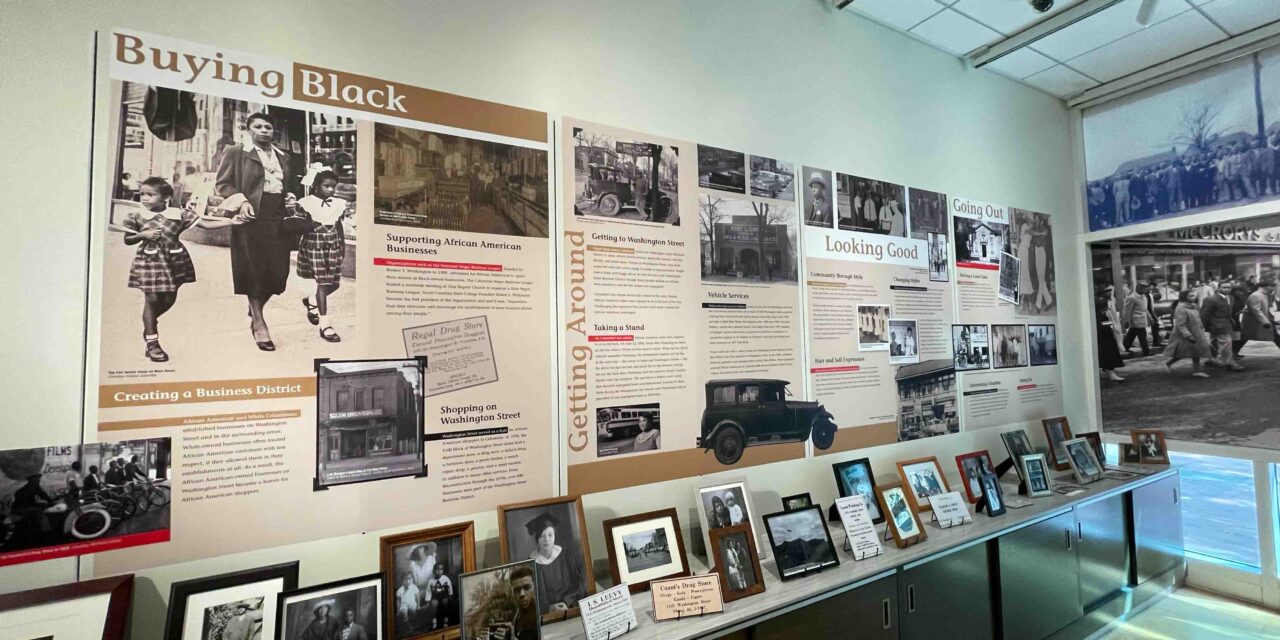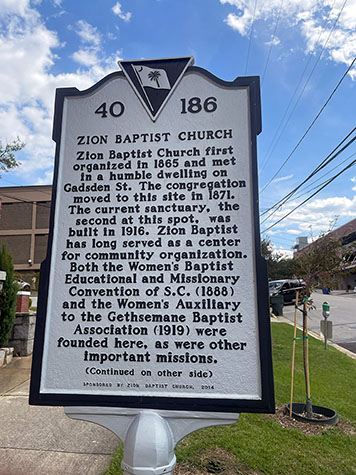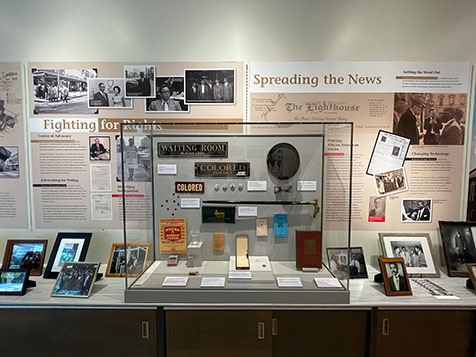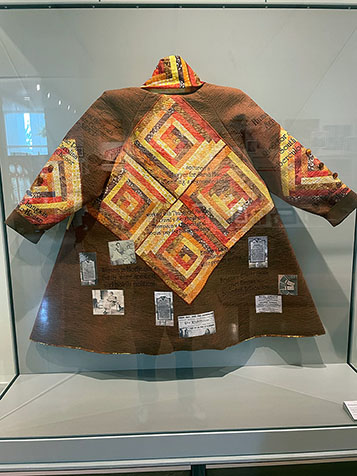The Columbia Museum of Art’s new exhibition is a collaboration between the museum, Columbia SC 63 and USC’s Civil Rights History and Research Center. (Photo by Langston Brooks/Carolina News and Reporter)
Washington Street in Columbia was the backbone of the city’s Black Wall Street from the start of Reconstruction in the 1870s to the Civil Rights Movement of the 1960s.
Black residents could watch a movie at the Capitol Theatre and then go dance at the Big Apple on Park Street as businesses flourished with the support of the city’s African-American community.
Columbia’s Museum of Art is bringing back some of the lost history of the city, with the help of Columbia SC 63 — a coalition dedicated to celebrating its civil rights history — and the Center for Civil Rights History and Research at the University of South Carolina.
“It allows people to see what Columbia’s black community was and how it had changed,” said DJ Holland, a doctoral student at USC. “From the media coverage of civil rights to the churches, such as Zion Baptist Church, to photography, it showcases it all.”
“Intersection on Main Street: African American Life in Columbia” showcases, in part, the economic growth of African Americans on Washington Street during the 20th century. It uses storytelling to look at key players in Columbia’s Civil Rights Movement.
“The exhibition features the individuals, institutions and organizations of downtown Columbia that established and maintained a resilient Black community and business district in the midst of segregation and discrimination,” said Dr. Bobby Donaldson.
Donaldson is an associate professor at USC. He also serves as historian and executive director of the university’s Center for Civil Rights.
“’Intersection’ provides visitors an opportunity to learn more about the vibrant African-American history and culture located in the heart of the city’s downtown corridor,” Donaldson said.
The center focuses on collecting and sharing South Carolina’s contributions to the Civil Rights Movement by providing exhibitions and opportunities for learning about key historical events and artifacts.
Some of the artifacts include swing coat created to honor civil rights activist Modjeska Simkins and articles from The Palmetto Leader, a newspaper run by Nathaniel J. Federick from 1925 until the mid-1960s.
The paper focused on politics and social issues and emphasized achievements made in the community.
The South Carolina State Museum, Zion Baptist Church, South Caroliniana Library and area residents all pitched in to create the exhibition, according to the Columbia Museum of Art.
Many of the framed photos come from Richard Samuels Roberts, who took on the task of capturing Columbia’s bustling Black community during the 20th century from his Washington Street photography studio.
The collaborative exhibition “provides opportunities to spark powerful connections and healing as it illuminates the multifaceted story of struggle for freedom and justice in Columbia,” said Della Watkins, the museum’s executive director.
Zion Baptist Church on Washington Street was a fundamental part of the black Columbian community during the 20th century. (Photo by Langston Brooks/Carolina News and Reporter)
The museum’s exhibit contains many historical artifacts provided by institutions and residents across South Carolina. (Photo by Langston Brooks/Carolina News and Reporter)
A swing coat honoring civil rights activist Modjeska Monteith Simkins of Columbia was commissioned by Columbia SC 63. Textile artist Patricia A. Montgomery created the coat. (Photo By Langston Brooks/Carolina News and Reporter)
Dr. Bobby Donaldson serves as historian and executive director of USC’s Center for Civil Rights. (Photo courtesy of Carolina News and Reporter)






